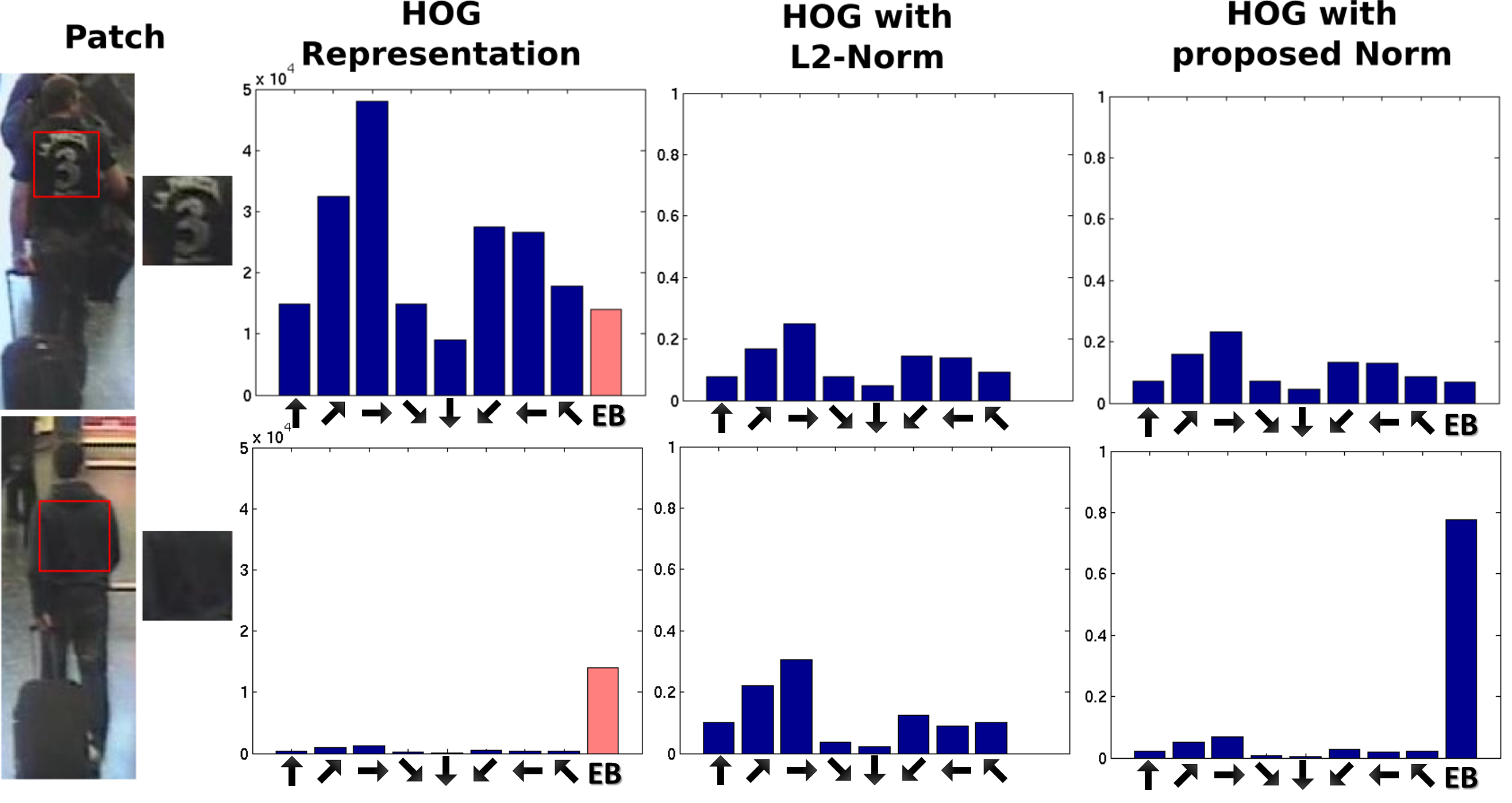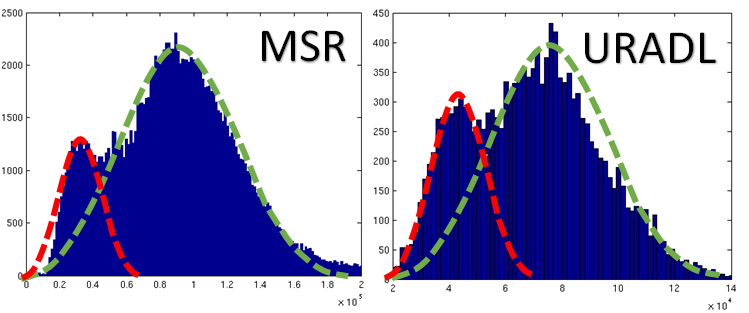Section: New Results
Minimizing Hallucination in Histogram of Oriented Gradients
Participants : Javier Ortiz, Slawomir Bak, Michal Koperski, François Brémond.
keywords: computer vision, action recognition, re-identification,
Challenges in histogram representation
In computer vision very often histogram of values is used as a feature representation. For instance HOG descriptor is in fact histogram of gradient orientations. Also histogram of codewords in Bag of Words representation is a very popular action recognition representation. In such a case we are not interested in absolute values for given bin, but rather in shape of histogram to find the patterns. To make histogram representation independent from absolute values we use L1 or L2 normalization. In the normalization process we treat histogram as a vector and we transform it in the way that it should have unit length according to given norm (L1, L2). The drawback of such approach is that normalization process may amplify the noise for histograms where absolute values are very small (no pattern or only noise). Such histogram after normalization can be very similar to histogram with strong absolute values. This situation is showed in figure 7 . Although original histogram in second row of figure 7 contains almost no information after normalization the values are amplified and the result is exactly the same as for histogram in the first row. Such behavior is called hallucinations.
Proposed normalization method
We propose to add an artificial bin with given value which would prevent small noisy values from being amplified during normalization process. In figure 7 in first row we show artificial bin in pink color. Thanks to that histograms after normalization (last column) are different. If we analyze cumulative sum of histogram values across data (we sum values of all bins in whole histogram and we draw distribution), we can find that in some data-sets we obtain bi-nomial distribution see figure 8 . The gap between two Gaussians indicates convenient border between noise and meaningful data. On the other hand many data-sets do not have this bi-nomial feature and for that we do not have formalization to find the value of artificial bin. This problem would be a subject of further studies.
The following method was successfully applied to person re-identification and action recognition problem. Further details can be found in the paper [42]



